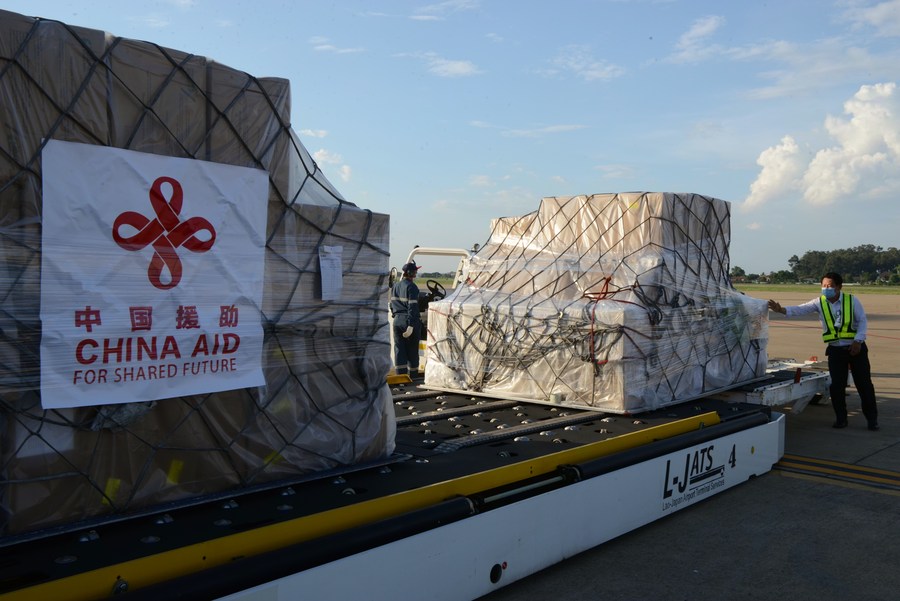Lately, China has played a more active role in the global arena. “Opening up” has boosted China’s political, economic, and cultural practices in the new era and will guide the country’s foreign exchange as a fundamental national policy in the years to come. “China is committed to its fundamental national policy of opening to the outside world and pursues a mutually beneficial strategy of opening up,” said Xi Jinping in his report to the 20th National Congress of the Communist Party of China. “It strives to create new opportunities for the world with its own development and to contribute its share to building an open global economy that delivers greater benefits to all peoples.”
China’s outlook on “opening up” calls for further promotion of genuine multilateralism and reforms of the global governance system, adherence to a sound path of economic globalization, and facilitation of people-to-people and cultural exchanges and mutual learning among civilizations in a more in-depth and extensive manner. China has been committed to developing “an open world” through an open global outlook with Chinese characteristics in the new era.
Over the past decade, China has comprehensively promoted major-country diplomacy with Chinese characteristics, actively participated in the reforms of the global governance system, promoted the building of a new type of international relations, and led construction of a human community with a shared future. China actively leverages its advantages as a major country to promote reforms of the international financial system and boost global economic growth in the G20, the Asia-Pacific Economic Cooperation, the Association of Southeast Asian Nations Plus Three and other mechanisms. China is also leading relevant countries to develop along a more open, inclusive and cooperative path involving the Shanghai Cooperation Organization, BRICS, the Asian Infrastructure Investment Bank, and more. In the extraordinary decade, China has always adhered to the diplomatic principles of independence, peaceful coexistence, equality, justice, mutual benefits and win-win results. China will never seek hegemony or engage in expansionism. It has always pursued a path of peaceful development and firmly ensured international relations and the world order move in a fairer and more reasonable direction. Today, China has established diplomatic relations with 181 countries and partnerships with more than 110 countries and regional organizations. Its “circle of friends” is constantly expanding into a massive global network.
Over the past decade, China has continued deepening its opening up, implemented its opening-up strategy more proactively, built a global network of high-standard free trade zones, accelerated construction of free trade pilot zones and free trade ports, and jointly provided public goods for international cooperation such as the Belt and Road Initiative (BRI) while coordinating the “dual circulation” development pattern to achieve mutually beneficial and win-win results for the global community. As of today, China’s Free Trade Zone Special Administrative Measures on Access to Foreign Investment and Special Administrative Measures on Access to Foreign Investment have been reduced to 27 and 31 items, respectively. China has become the world’s second-largest economy with manufacturing scale, foreign exchange reserves, and total trade volume in goods ranking first globally. It has become a key trading partner for more than 140 countries and regions. China actively leads the global economic development pattern and promotes shared interests for the global community. So far, China has inked more than 200 BRI cooperation documents with over 140 countries and 30-plus international organizations. Looking ahead, China will pursue its opening-up pattern in a larger scope, to wider areas, and at deeper levels.

Over the past decade, China has strengthened its diverse and orderly people-to-people and cultural exchanges featuring governmental leadership as well as non-governmental participation. It has established official, semi-official, and non-governmental cultural exchange systems with the United States, the United Kingdom, Indonesia, South Africa, India, Japan, and other countries. The forms of people-to-people and cultural exchanges continue increasing. Chinese and foreign governments, think tanks, colleges, cities, and non-governmental organizations have continuously enriched the exchange through cultural activities, art festivals, cultural relics exhibitions, book exhibitions, tourism years, film festivals, and Sino-foreign academic, educational, and business cooperation. The breadth and depth of people-to-people and cultural exchanges continue expanding. Bilateral and multilateral cooperation has been carried out in fields like education, science and technology, culture, sports, youth, health, media, tourism, local cooperation, and women’s issues, contributing to a comprehensive layout of “people-to-people diplomacy.”
China has embraced and integrated into the world with a more open mind in terms of politics, economics, and culture to pave a Chinese path to modernization. The path not only benefits from the process of globalization, but also promotes its evolution. Other developing countries can use the theory of Chinese modernization as reference because it breaks through the Western-dominated discourse to define and interpret modernization. We are witnessing major changes unfolding, something unseen in a century, in which crises and opportunities coexist, leaving the global order in unprecedented turmoil. However, China’s original aspirations to embrace and integrate into the world stand strong and will last forever.

The feature is contributed by Wang Dong and Ma Tao of China Pictorial.